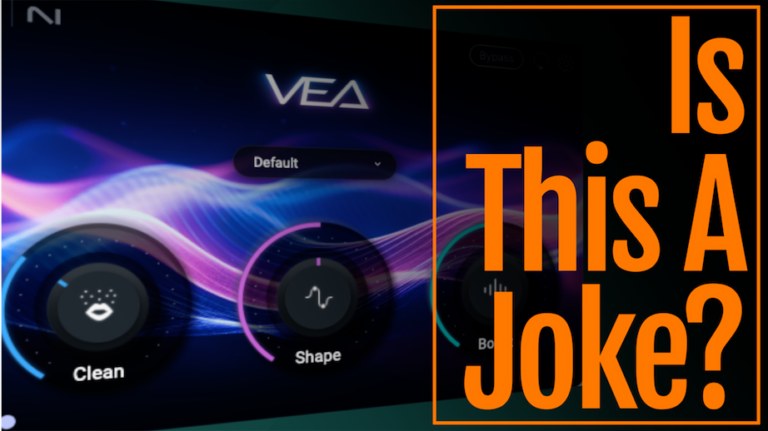As podcast producers and audio engineers, we’re constantly searching for the perfect tools to rescue less-than-ideal recordings. Having spent countless hours cleaning up dialogue tracks, I’ve had the chance to thoroughly test both Accentize dxRevive and dxRevive Pro across various real-world scenarios. Today, I’m breaking down what you actually get for your money and, more importantly, when each version shines (or falls short).
Price Comparison: What’s the Damage?
Let’s talk dollars and cents first:
- Accentize dxRevive (Standard): $99
- Accentize dxRevive Pro: $299
- Upgrade from Standard to Pro: $199
Good news: there’s no penalty for starting with the standard version and upgrading later. One thing to note, though – the Pro version requires an iLock account (free to create, no physical dongle needed).
Feature Breakdown: Standard vs Pro
What dxRevive (Standard) Offers:
- Studio and Studio 2 algorithms
- Basic noise and reverb reduction
- Built-in EQ restoration
What dxRevive Pro Adds:
- Five additional algorithms (Studio 3, Retain, Natural, Natural 2, and EQ Restore)
- Spectral focus mode for frequency-specific processing
- Presets
- A/B comparison tools
Real-World Performance: The Algorithms in Action
Rather than just listing features, let’s hear how these algorithms actually perform on problematic audio.
Scenario 1: Heavy Background Noise
On our first test clip with significant background noise, neither the Standard algorithms (Studio and Studio 2) performed particularly well. Even at 100% processing, we still heard noise and started getting noticeable artifacts around 75%.
Even the Pro-exclusive Studio 3 algorithm, while slightly better, couldn’t completely clean the audio without introducing that telltale “processed” sound with ringing artifacts around words.
Takeaway: dxRevive’s noise reduction capabilities (in both versions) are best suited for light to moderate noise, not severe cases.
Scenario 2: Heavy Reverb with HVAC Noise
On our second clip featuring substantial room reverb and HVAC system noise, all three Studio algorithms did an adequate job with reverb but struggled to completely eliminate it without introducing that processed, slightly metallic quality.
Studio 3 (Pro only) performed marginally better than the Standard algorithms, but the difference wasn’t dramatic.
Takeaway: For heavy reverb, you’ll need to find a balance between reduction and audio quality – neither version is a magic bullet.
Scenario 3: Clean Recording with Minimal Reverb
For our third clip (a relatively clean recording with just a hint of reverb), all algorithms performed well. The Standard version’s Studio 2 algorithm actually provided more natural voice quality than Studio 1, with less heavy-handed EQ.
Interestingly, the Pro-exclusive Natural algorithm outperformed Natural 2 on this particular clip, offering the most natural sound while still addressing the slight reverb issue.
Takeaway: For already decent recordings, the Standard version’s Studio 2 performs admirably, though Pro’s Natural algorithm offers subtle improvements.
Scenario 4: Severe Fan Noise (Laptop Recording)
Our fourth clip featured the all-too-common laptop fan noise that gradually increases throughout the recording. This is where we saw the biggest difference between versions:
- Standard algorithms (Studio and Studio 2) struggled significantly
- Pro’s Studio 3 algorithm handled this challenging noise much better, making the audio substantially more listenable
Takeaway: For handling variable mechanical noise like computer fans, dxRevive Pro’s additional algorithms provide meaningful improvement.
Scenario 5: Moderate Reverb
Our final test featured moderate reverb where both versions performed adequately. The choice between algorithms became more about personal preference for voice tonality rather than noise/reverb reduction capability.
Takeaway: For moderate issues, both versions can produce acceptable results – your choice may come down to tonal preferences.
The Bottom Line: Which Should You Buy?
Get dxRevive Standard ($99) if:
- You’re primarily working with decent recordings that need minor to moderate cleanup
- You’re on a tight budget
- You deal mostly with consistent background noise or light reverb
- You can supplement with other specialized tools for severe noise cases
Upgrade to dxRevive Pro ($299) if:
- You regularly work with problematic audio from various sources
- You deal with mechanical noises like computer fans
- You need more flexibility with different algorithm options
- The A/B comparison feature would save you time in your workflow
The Honest Assessment
Neither version excels at heavy noise reduction compared to specialized tools. Where dxRevive (both versions) really shines is in handling reverb and bringing a professional “studio” sound to dialogue recordings.
For a complete audio restoration toolkit, consider pairing dxRevive with a specialized noise reduction tool like RX’s Voice DeNoise or Supertone Clear for a two-stage process: clean the noise first, then apply dxRevive to handle reverb and add that polished sound.
As with most audio tools, there’s no one-size-fits-all solution. The best approach is to build a toolkit of complementary plugins that address different audio challenges.






